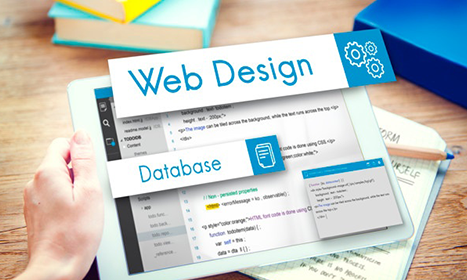
- July 24, 2021
- Lifestyle
Understanding the Basics of Web Design
The Art and Science of Web Design: Crafting Digital Experiences
In today’s digital age, a well-designed website is more than just a collection of pages; it’s a powerful tool that can influence user behavior, enhance brand identity, and drive business success. Whether you’re a seasoned designer or just starting out, understanding the principles of web design is essential for creating engaging and effective online experiences. In this blog post, we’ll explore the key elements of web design, current trends, and best practices to help you create stunning websites that resonate with users.
1. Understanding the Basics of Web Design
a. User-Centered Design
At the heart of effective web design is the concept of user-centered design (UCD). This approach focuses on understanding the needs, preferences, and behaviors of users to create a website that is intuitive and easy to navigate. Conducting user research, creating personas, and testing prototypes are essential steps in the UCD process.
b. Visual Hierarchy
Visual hierarchy refers to the arrangement of elements on a page to guide users’ attention and convey the importance of information. By using size, color, contrast, and spacing effectively, designers can create a clear path for users to follow, ensuring that they find what they’re looking for quickly and easily.
c. Responsive Design
With the increasing use of mobile devices, responsive design has become a necessity. A responsive website adapts to different screen sizes and orientations, providing an optimal viewing experience across devices. This not only improves usability but also boosts SEO, as search engines prioritize mobile-friendly sites.
2. Current Trends in Web Design
a. Minimalism
Less is often more in web design. Minimalist design focuses on simplicity, using ample white space, clean lines, and a limited color palette to create a sleek and modern look. This approach enhances readability and allows users to focus on the content without distractions.
b. Dark Mode
Dark mode has gained popularity as a design trend, offering a visually appealing alternative to traditional light backgrounds. It reduces eye strain, conserves battery life on mobile devices, and can create a more immersive experience. Implementing a toggle for users to switch between light and dark modes can enhance user satisfaction.
c. Microinteractions
Microinteractions are subtle animations or design elements that provide feedback to users during their interactions with a website. These can include hover effects, loading animations, or notifications. Microinteractions enhance user engagement and make the experience feel more dynamic and responsive.
3. Best Practices for Effective Web Design
a. Prioritize Accessibility
Designing with accessibility in mind ensures that all users, including those with disabilities, can navigate and interact with your website. This includes using alt text for images, ensuring sufficient color contrast, and providing keyboard navigation options. Following the Web Content Accessibility Guidelines (WCAG) is a great way to ensure your site is accessible to everyone.
b. Optimize for Speed
Website speed is crucial for user experience and SEO. A slow-loading site can lead to high bounce rates and lost opportunities. Optimize images, leverage browser caching, and minimize HTTP requests to improve loading times. Tools like Google PageSpeed Insights can help identify areas for improvement.
c. Consistent Branding
Your website is often the first point of contact for potential customers, making consistent branding essential. Use a cohesive color scheme, typography, and imagery that align with your brand identity. This not only enhances recognition but also builds trust with your audience.
4. Conclusion
Web design is a dynamic field that combines creativity and technical skills to create engaging digital experiences. By understanding the principles of user-centered design, staying updated on current trends, and following best practices, you can craft websites that not only look great but also perform well. Whether you’re designing for a personal project or a client, remember that the ultimate goal is to create a seamless and enjoyable experience for users. Happy designing!









